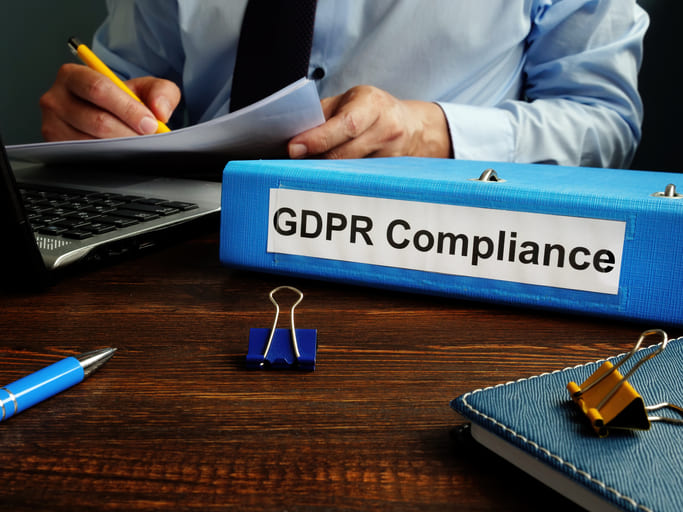Data protection today is a fundamental requirement that businesses must fulfil. Different data protection laws across the globe have been enacted to protect the use of personal information of individuals in a given country against unfavorable use or access. GDPR or General Data Protection Regulation is one such data protection law of the European Union that has come into force from May 2018 to regulate how organisations can gather, store and use the data of the EU citizens. EU and EEA citizens data handlers must adhere to the EU-GDPR provisions. There are seven data protection principles that this law requires a business to adopt. The law grants citizens the ‘Right to Erasure,’ commonly known as the ‘Right to be Forgotten,’ enabling them to control their personal information and request its deletion from businesses to manage data use and processing effectively.
Principle of Data Minimization
Data minimization is a part of the seven principles of GDPR, mentioned in Article 5 (1)(C). Article 5 of GDPR clearly mentions that organizations should only collect and process personal data that is necessary for their specified purposes, and they must erase the data without any delay after the specific task is completed. Data minimization and data erasure form an integral part of GDPR compliance. By minimizing the collected data, misuse of data is reduced, unauthorized access is prevented, and data manipulation is restricted, therefore improving the privacy of the individuals. By following this principle of the EU-GDPR, organizations not only stay compliant with the legal requirements of this law but also prevent themselves from hefty penalties levied for non-compliance. Consequently, GDPR has put the bar high for penalties of up to Euro 20 million or of 4% of the total worldwide turnover for non-compliance.
Aside from financial penalties, non-compliance can lead to lack of trust between the business and its customers. In an era where consumers are progressively becoming conscious on their rights in relations to their personal data, a leakage of data or failure to respond to data deletion request could bring about serious reputational loss. On the other hand, if a business demonstrates a good policy regarding the protection of data, then it will be viewed in a positive light and the customers will be loyal to the firm.
To ensure effectiveness in the implementation of data minimization, businesses need to conduct regular data audits. Such audits ensure that the organization eliminates unnecessary data that would otherwise make the system more vulnerable to intrusion and excessively cumbersome to manage. In addition, it is necessary for businesses to understand and state what the data is collected for, and be fair in explaining to individuals how their data will be used. In addition to strengthening trust, this practice complies with GDPR’s provisions on the transparency of data processing activities.
Role of Data Erasure in GDPR Compliance
Effective Data Erasure practices help organizations comply with GDPR by ensuring that sensitive data that is no longer needed is securely erased. Further, it allows organizations to erase data securely when customers exercise their ‘Right to Erasure’ under Article 17 of GDPR. Regular Data Erasure practices also help erase outdated, redundant, and trivial data. Using data erasure tools like BitRaser File Eraser or Drive Eraser helps organizations erase unnecessary files, folders, or drives, thus reducing data vulnerability and data breach risks. Effective data erasure enables organizations to repurpose, recycle, and refurbish devices, saving valuable devices from being destroyed shortly.
Below are some effective data management practices that help businesses stay compliant with GDPR.
- Implementing a Data Retention & Destruction Policy– Implementing a detailed data retention policy that outlines how long the businesses will store the data is an essential requirement alongside the categorization of data and regulatory requirements. Crafting a data destruction policy helps define methods of data destruction when data has fulfilled its purpose when the device leaves office premises, is reallocated to a different user, or has reached end-of-life.
- Using Secure Data Erasure Tools– Secure data erasure tools overwrite storage media with random patterns, ensuring complete removal of sensitive information. This irreversible process prevents data recovery, effectively minimizing retained data and supporting GDPR compliance efforts.
- Employee Training– Employee training on data management educates staff about the proper handling and disposal of sensitive information. It covers protocols, tools, and legal requirements, ensuring consistent implementation of data minimization practices across the organization reducing risks of non-compliance and data breaches.
Conclusion
By implementing secure data disposal techniques such as data erasure, businesses can ensure compliance with GDPR requirements and maintain transparency in their work ethics. This practice enhances the business’s reputation by aligning with regulatory bodies and demonstrating a commitment to respecting individual rights. Data erasure has emerged as an optimal method for safeguarding data privacy, mitigating risks, and promoting cost-effective and efficient data management by eliminating unnecessary data handling expenses. Data erasure has highlighted another positive aspect for organizations, which is ensuring environmental sustainability and promoting reusability.



































